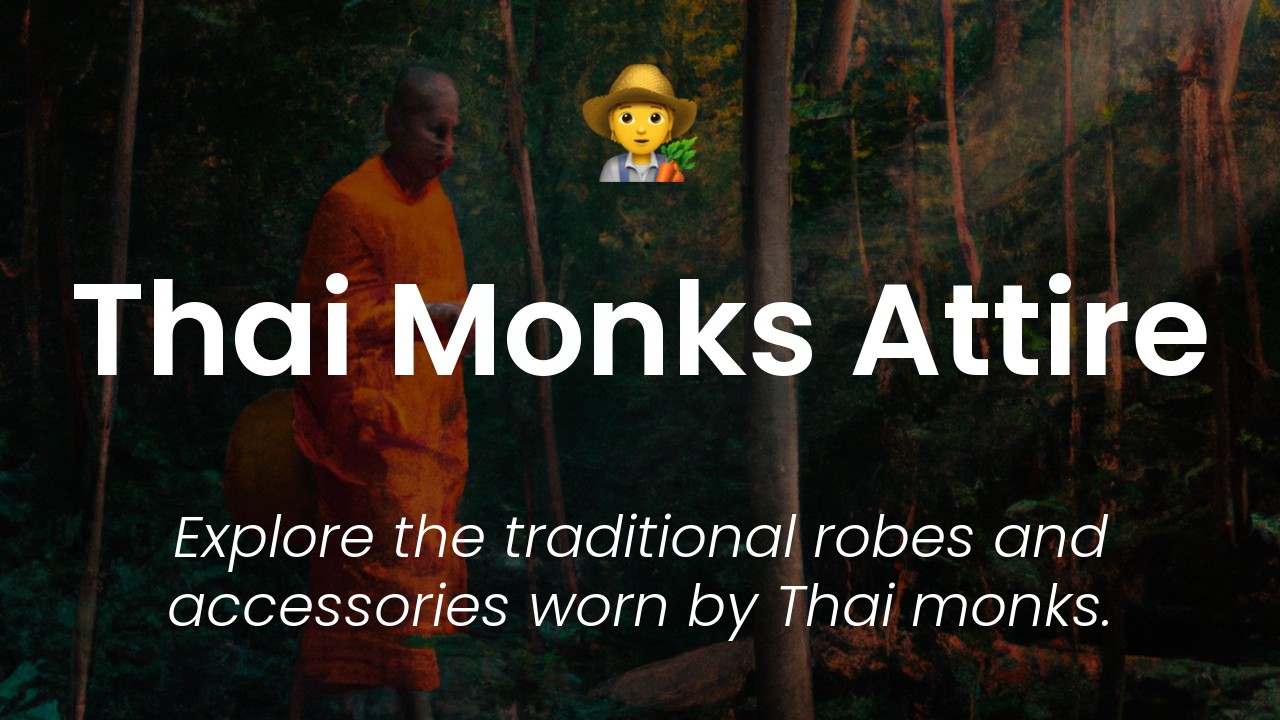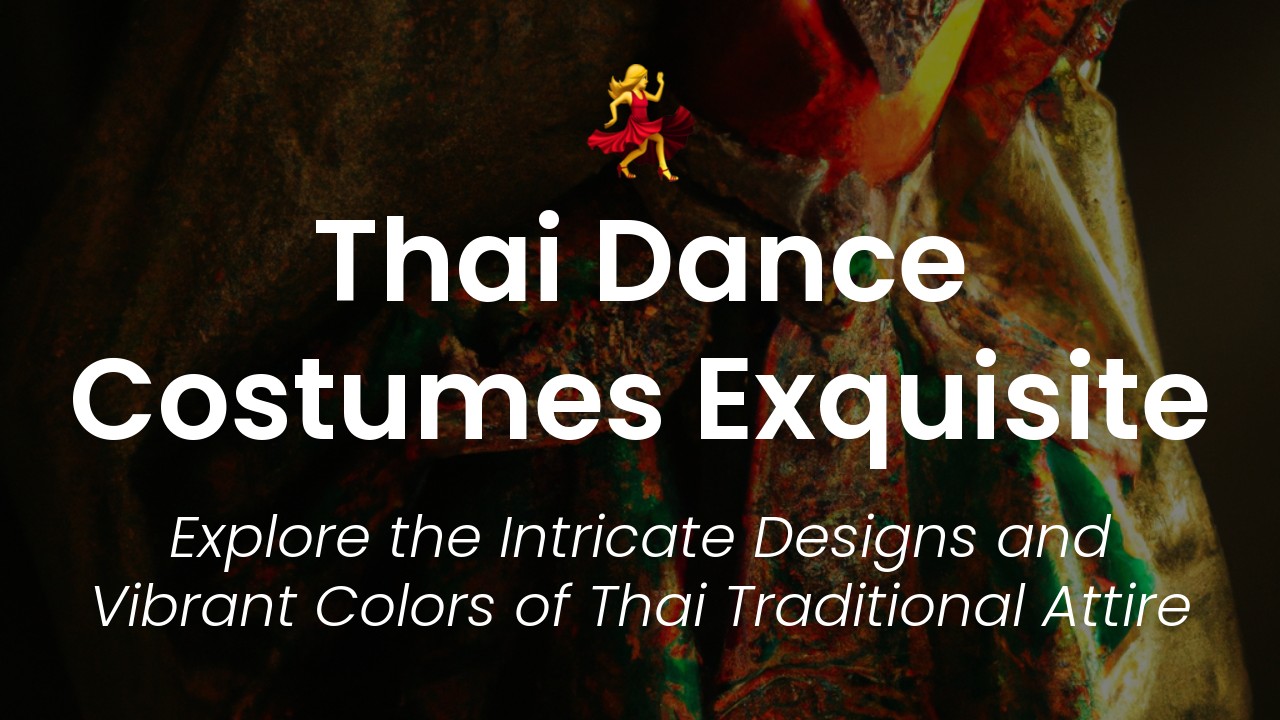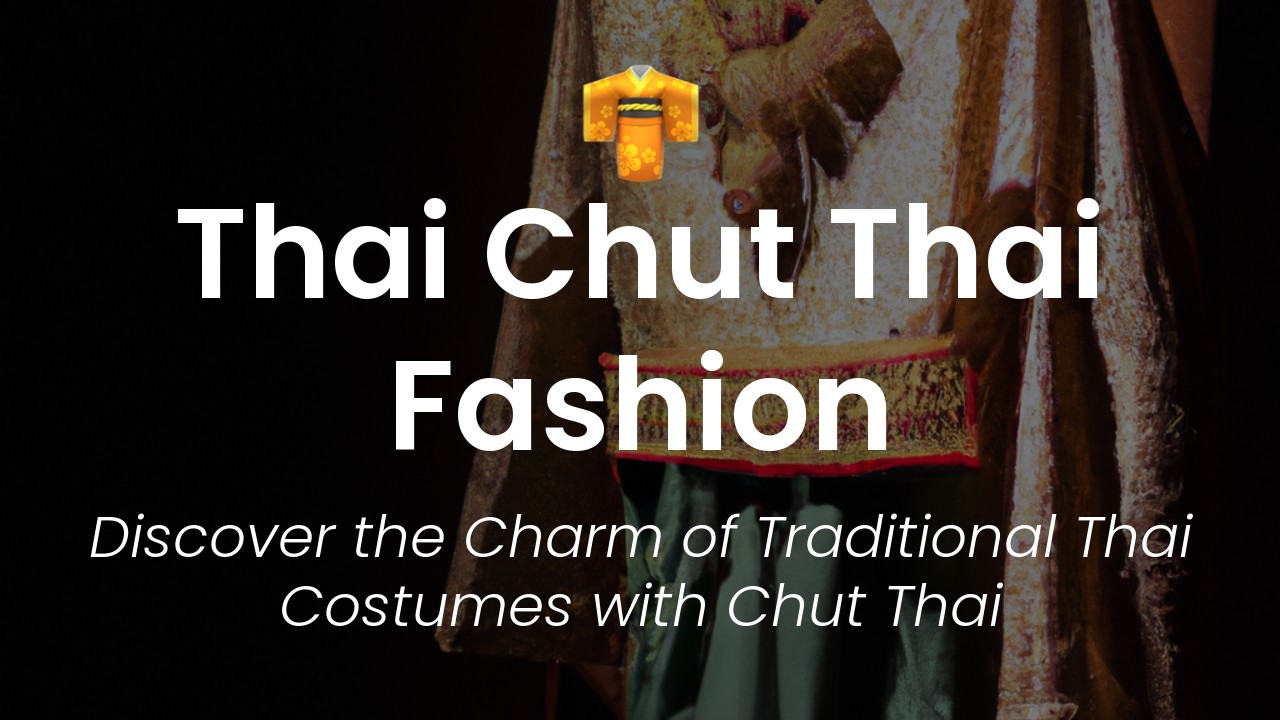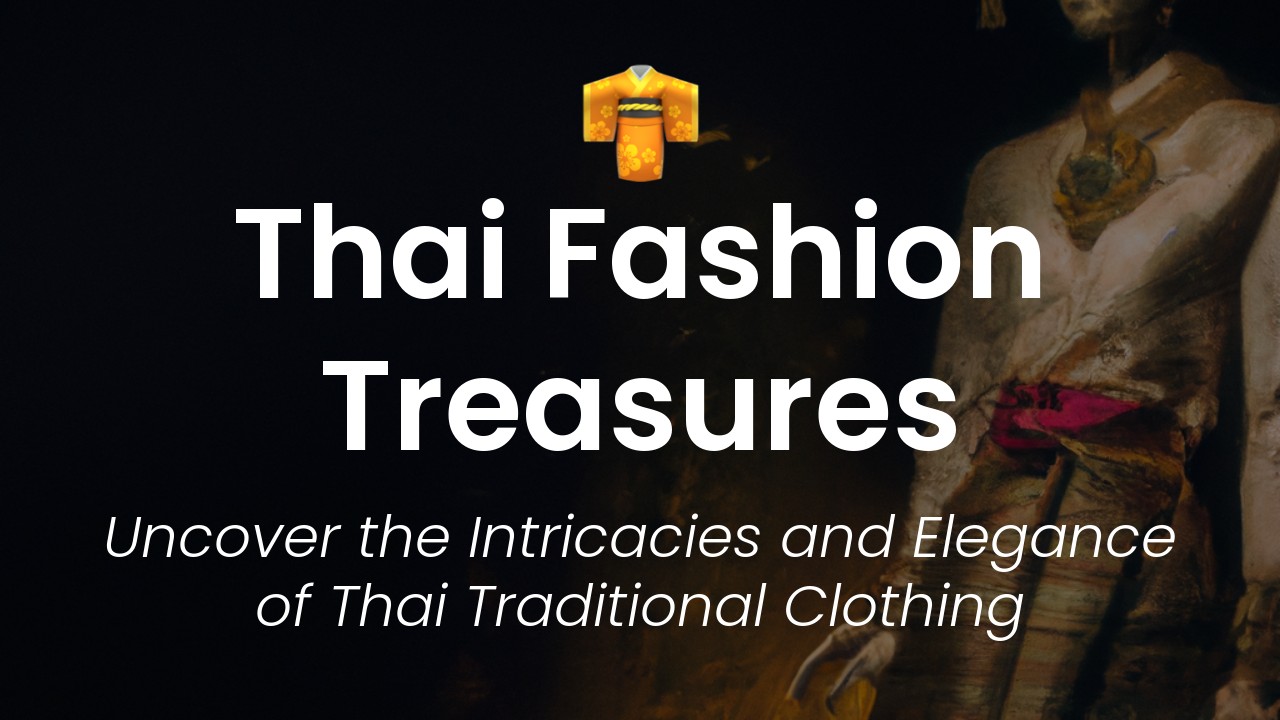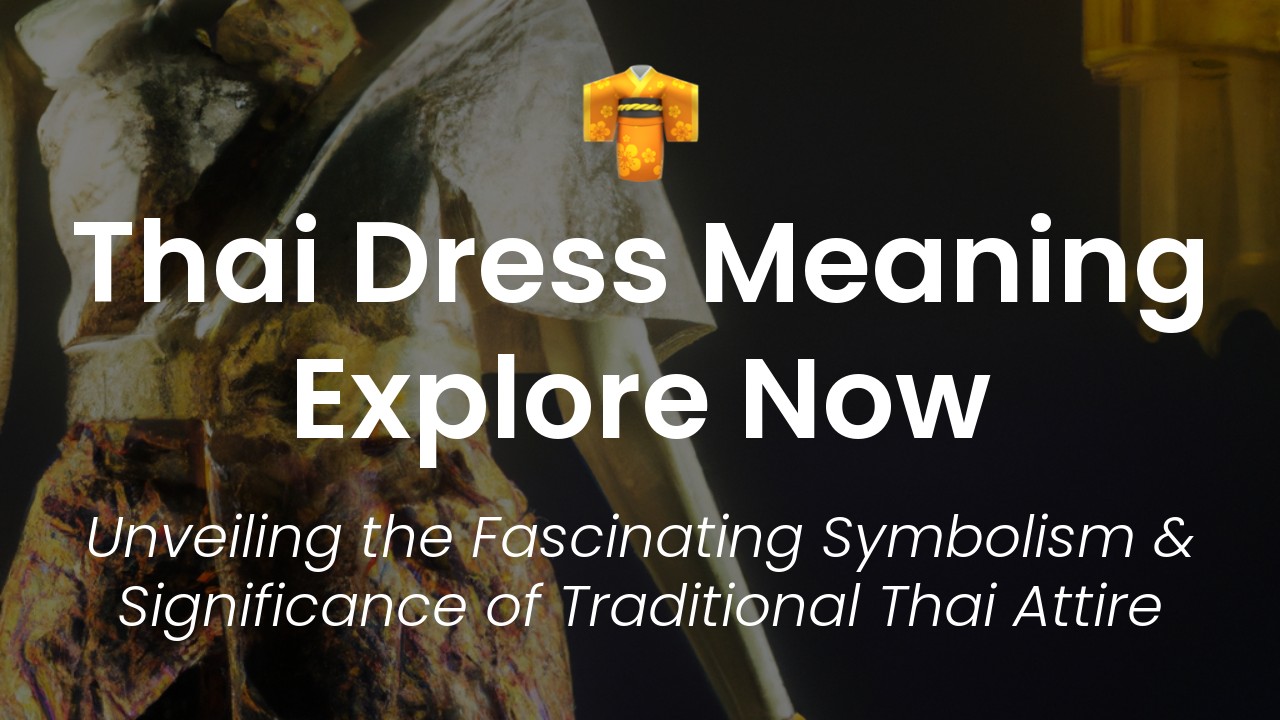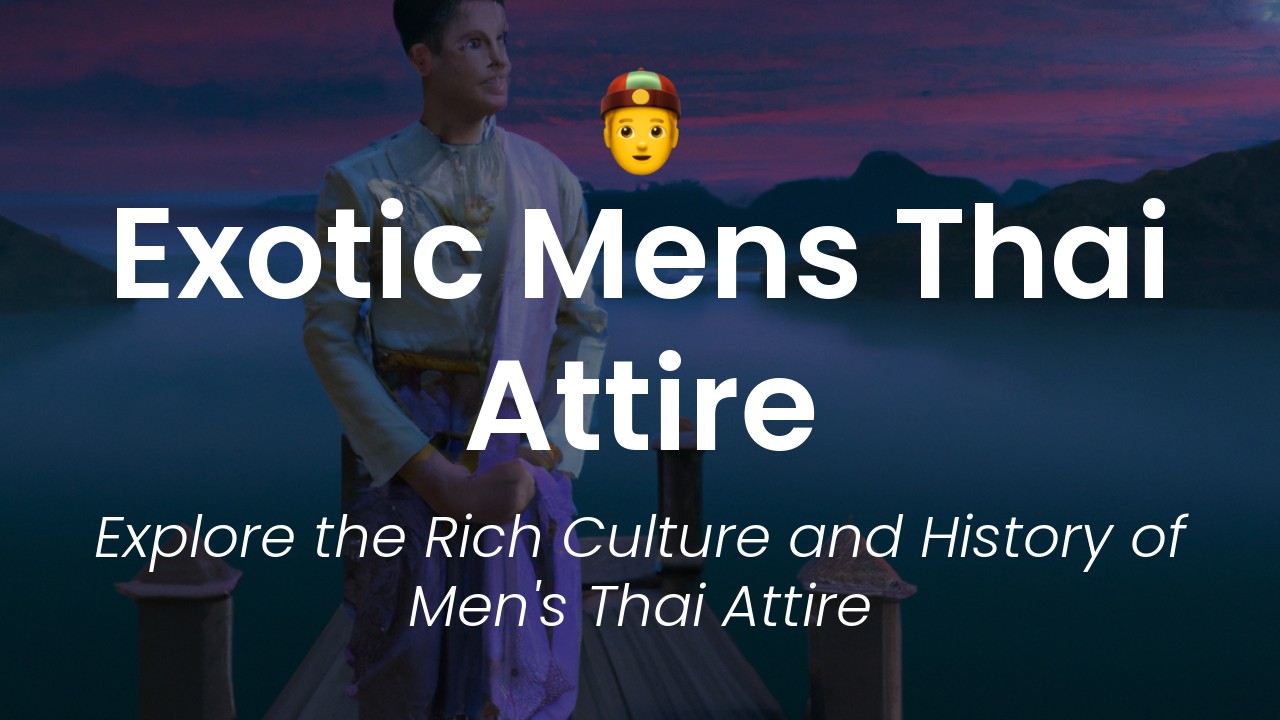As a Thai native, I grew up with the sight of statuesque Thai monks wandering the streets with their shaved heads and orange robes. For many visitors to Thailand, the sight of Thai monks in their traditional attire is one of the most memorable experiences of their trip. You may have seen them at temples, on the street receiving offerings or blessing the locals. But aside from their calm and serene demeanor, the robes they wear play an important role in their daily life.
The traditional attire of Thai monks has become an icon of Thailand and is often featured in postcards, paintings, and other forms of art representing the country of smiles. But the garments are more than just cloth; they represent a unique culture and a sense of belonging to a religious community. The robes may look all alike, but they come in different shades of orange or brown or saffron depending on the specific sect of Buddhism to which the monk belongs.
In this article, I aim to take you on a journey to explore the significance and symbolism behind the Thai monk’s attire. I will delve into the history of the robes, their meaning, and uncover interesting facts and stories that you might not have heard before. So sit back, relax, and let me take you on an inspiring and spiritual journey.
The Colorful Kasaya Robe
As someone who grew up in Thailand, I have always been fascinated with the attire of Thai monks. The brightly colored robes that they wear everyday are not only beautiful, but they also have deep cultural and religious significance. These robes are known as kasayas, and they come in shades of orange, brown, and maroon.
The kasaya robe is actually made up of three separate robes, which are worn one on top of the other. The first robe is called the sanghati, and it is a thin, white robe that is worn close to the body. The second robe is called the uttarasanga, and it is a slightly thicker robe that is worn over the sanghati. The third and final robe is the outermost layer, and it is called the sabong.
The color of the kasaya robe can vary depending on the region and the sect of Buddhism that the monk follows. In Thailand, for example, most monks wear orange robes, but in Sri Lanka the robes are usually reddish-brown.
The Inner Robe or Sanghati
The sanghati is the first robe that a monk puts on in the morning. It is made of a thin, white material that is meant to be worn close to the body. The sanghati is typically worn by the monk when they are inside the temple or monastery. The white color of the sanghati is meant to symbolize purity, and it serves as a reminder to the monk that they should strive to lead a pure and virtuous life.
The Upper Robe or Uttarasanga
The uttarasanga is the second robe that a monk puts on in the morning. It is a slightly thicker robe than the sanghati, and it is meant to be worn over the white robe. The uttarasanga is usually a darker color than the sanghati, and it can be either brown, orange, or maroon. The color of the uttarasanga can vary depending on the region and the sect of Buddhism that the monk follows.
The uttarasanga is worn by the monk when they leave the temple or monastery to go on their daily alms rounds. The robe is draped over the left shoulder and under the right arm, leaving the right arm and shoulder exposed. This is meant to signify that the monk is not attached to material possessions and is free to give and receive freely from the community.
The Belt or Samakot
The samakot is a belt that is worn over the uttarasanga. It serves to hold the robe in place and to keep it from falling off the monk's body. The samakot is made of thin strips of cloth that are braided together. It is usually the same color as the uttarasanga.
The Shoulder Cloth or Oap Nam Jai
The oap nam jai is a small cloth that is draped over the left shoulder and under the right arm. It is also known as a "cloth of compassion," and it is meant to symbolize the monk's willingness to help others. The oap nam jai is often used to wipe away sweat or to help carry items during the daily alms rounds.
The Footwear or Tat Krahm
Monks do not wear shoes or sandals, but they do wear something known as tat krahm. Tat krahm are essentially small pieces of cloth that are wrapped around the feet and ankles. They serve to protect the monk's feet from dirt and insects while they are walking outside.
In conclusion, the attire of Thai monks is not only beautiful but it also carries deep religious and cultural significance. The kasaya robe is made up of three separate robes that are worn one on top of the other. The sanghati is a thin, white robe that is worn close to the body. The uttarasanga is a slightly thicker robe that is worn over the sanghati, and the sabong is the outermost layer. The color of the kasaya robe can vary depending on the region and the sect of Buddhism that the monk follows. Additionally, the samakot, oap nam jai, and tat krahm all serve important roles in the monk's daily life.

